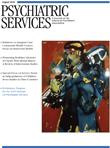Social Inclusion
Before the 1960s people with disabling mental illnesses were largely confined to state hospitals and segregated from their communities. This public policy was characterized as being the result of the "stigma" of mental illness. The deinstitutionalization movement of the 1960s sought to bring these excluded people back into their communities despite their disabilities. There was a sense that communities should make room for people as a civil right by "giving them space"—while avoiding them at the same time. No longer segregated in institutions, they were segregated in communities—often in boarding and nursing homes—thus gaining certain protections but not gaining opportunities to become full members of society.
Since the 1990s "recovery" has been an increasingly influential social movement in public mental health care. In the recovery era, people with mental illnesses are no longer seen as "others" to be tolerated but as contributing members of society. Their opportunities for making such contributions, however, remain limited.
Promoting tolerance and community acceptance of persons with psychiatric disorders, although necessary, is no longer sufficient. We need to move beyond "antistigma" initiatives and predominantly biological-pharmacological treatments. Promoting "social inclusion," an approach that originated in European Union countries, is one way we can move forward. It requires that society and its institutions actively promote opportunities for the participation of excluded persons, including persons with psychiatric disabilities, in mainstream social, economic, educational, recreational, and cultural resources ( www.socialinclusion.org.uk/publications/NSIP_Vision_and_Progress.pdf ). This concept has recently emerged in the United States as a way of framing the social aspect of a recovery movement that has seemed, at times, to be overly focused on the subjective experience of recovery. "Exclusion" is beginning to replace so-called stigma in our conceptualization of social attitudes associated with disabling mental illnesses.
Full recovery can occur only when people with mental illnesses have the means and access to full-fledged membership in their communities. Social inclusion is not only an approach but a moral imperative, and opposition to that imperative is not stigma but discrimination. The challenge now is to move away from conceptualizing exclusion and discrimination as stigma and toward ways to support and promote the social inclusion of people with psychiatric disabilities.



